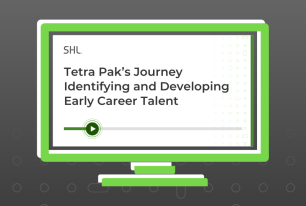Job Analysis in the Increasingly Complex New World of Work
Jobs that required relatively static knowledge, skills, and abilities are a thing of the past. Here’s how to understand and navigate jobs in the 21st century.
Share
The rapid evolution of jobs in today’s workforce is striking. Jobs that used to maintain consistency year after year and required relatively static knowledge, skills, and abilities are a thing of the past.
Role expectations may change within months of being created. This disruption in the world of work is often referred to as the “Fourth Industrial Revolution” and is driven by new digital business models, customer-first business strategies, and workforce trends such as the gig economy. Organizations such as Forbes and the World Economic Forum predict that millions of jobs will be lost in the next 2–5 years and either replaced by technology or by completely new jobs that don’t exist today.
The impact on traditional approaches to job analysis is significant as they fail to capture the important nuances and potential changes that drive the talent processes aligned to the new world of work. To help address this disconnect, SHL provides rigorous, future-oriented job analysis to capture relevant job-related data for organizations in this new reality.
Traditional approaches to job analysis fail to capture the important nuances and potential changes that drive the talent processes in the new world of work.
Here are our three recommendations for a legally defensible approach to inform the development of job-related and sustainable pre-employment tools, which also accounts for the evolving nature of jobs and organizations.
- Conduct Visionary Interviews with Leaders
Once clarity is gained on the intent of the job analysis, and expectations are aligned, visionary interviews should be conducted to gain insight into the strategic vision and objectives of the organization. Identifying and including leaders who have a more strategic and future-oriented mindset is vital to the success of the interview. In addition to identifying organizational objectives and their future-facing strategies, questions are designed to unearth what leaders foresee as changes shaping the organization, industry, or workforce, and how they impact the expectations of success for the role or job family in question. This brainstorming exercise begins to extract a clear picture of current role expectations, as well as perceived changes in requirements, to be successful given the strategic organizational context.
Example question: What changes do you foresee for the organization in the next 1-3 years and how will these changes impact the strategic objectives of the organization and the role we are discussing today? - Run Focus Groups with Managers and SMEs
Though more tactical in nature, these sessions with subject-matter experts who have the greatest visibility into specific roles provide another opportunity to capture existing knowledge, skills, and abilities required for success, as well as perceived changes that would alter “what good looks like” moving forward. Due to the changing nature of the workforce, the skills identified tend to be less tangible in nature and reflect more dispositional aspects of performance rather than more traditional skill sets. Future-focused skill sets such as critical thinking, collaboration, and creativity are becoming more important than ever, regardless of the job, and they become increasingly beneficial over time. In order to drive a list of skill sets and behaviors for success today, and heading into the future, use questions such as: How has this role changed in the last 1–3 years? What tactical changes do you foresee in the organization and the skill sets needed to be successful given these changes? - Use Linkage Process
Another methodology commonly used to capture more future-oriented content in the assessment is a linkage process. This entails an in-depth review of validated assessment content and its alignment to competencies, behaviors, and skills identified during the visionary interviews and focus groups. Consultants with a background in Industrial/Organizational Psychology not only map the assessment content to the competencies but also provide a rating (on a 1-5 scale) on the strength of the linkage. This provides a rigorous standardized approach to identify key skills and competencies that are currently important but also those related to success in the future.
The combined data, together with SHL’s Advisory Services to regularly monitor organization-specific changes, provide a succinct way to stay attuned to dynamic changes in drivers of success in today’s digital business environment. Outputs are used in multiple ways, including to inform assessment choices and create competency and career-pathing frameworks.
Contact one of our experienced consultants to learn more about how we can help you stay proactive and ahead of changing and evolving workforce requirements.









